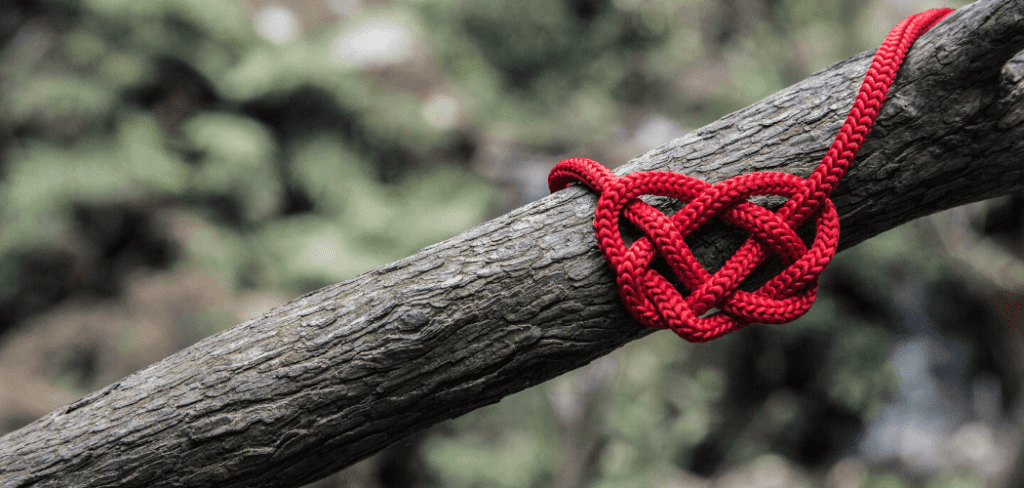Knot tying is a fundamental skill that every mountaineer must master. Not only is it essential for safety and security while climbing, but it also allows for efficient and effective movement on the mountain. From securing a rope to a carabiner to creating a belay system, knowing how to tie the right knot for the situation can mean the difference between a successful climb and a dangerous accident.
In this article, we will explore the importance of knot tying in mountaineering and the various knots that every mountaineer should know. I’ll expound on these importances under the different kinds of knots every mountaineer out to master.
Figure eight knot
The figure eight knot is a common climbing knot used for tying in ropes to a climbing harness or other object. It is not a complicated knot but it can be difficult to tie correctly. For this reason, it is important to learn how to do it properly.
This is the most common knot used by climbers, and it is a good place to start. Although it can be difficult to tie, it’s easy to learn. You should check your buddy’s scout before attempting to tie it.
To make a figure eight, you’ll need two strands of rope. Each strand should be threaded through a loop. As you pull on the rope, it should pull the other strands through. When you’re done, your knot will look like a closed eight with a tail.
There are several variations of the figure eight knot. One of the most popular is the double figure eight. With a doubled up version, you won’t need to make a bottom loop.
Another variation is the butterfly. A butterfly is a very compact knot, but it isn’t as simple to tie as the figure eight.
While the figure eight has been widely credited for being the most important knot, it isn’t the only one. Check out the double fisherman’s bend, which is also a very useful knot.
Figure 8 Knots are a great way to keep your rope from slipping out of sight. But they are not the most important aspect of climbing. Your safety should always come first.
If you’re new to rock climbing, you may want to join a gym with an instructor to get more practice. You should also take a safety course.
Related: What Are The Stages Of Climbing a Mountain
Bowline knot
It’s no secret that the bowline knot is one of the most important knots to learn for mountaineering. While not the fanciest knot, it is easy to tie and untie, and can be used in a variety of situations. However, if used improperly, it can lead to serious problems. Fortunately, there are many variations of the bowline knot that have been tested and proven to be secure and safe.
The common clove hitch is a relatively simple knot to tie, and works well for securing the end of a rope in a variety of applications. Another common knot for mountaineering is the girth hitch.
The bowline knot is not quite the king of knots, but it is a popular knot for climbing, boating, and even rescue. Although it can be a bit tricky to tie correctly, it is also easy to untie when it needs to be, and it is very useful for securing loads in the case of a fall.
It’s a good idea to use a stopper knot to finish off the bowline. A stopper knot is a kind of double overhand knot. You wrap the two ends of the bowline around a small loop that you have tied. This is the best way to make sure that you have the right configuration.
In addition, a common bowline can be used to secure two ropes together. This is particularly helpful in situations where the ropes are slippery, and can’t be easily threaded through the knot. For instance, in the case of a chimney climb, a double bowline can be used to attach the chimney to the ridgeline.
When tying a bowline, it is a good idea to tie it in a safe environment first. Once you have finished tying your bowline, it is also a good idea to check it for strength. If the bowline knot has been weakened or bent, you will need to re-tie it.
Trace-Eight

When a rock climber is trying to figure out how to tie a knot, there are many different reasons why it is important. The first reason is safety. If you’ve ever fallen while rock climbing, you know that a knot is a vital part of your fall protection.
Another reason why a knot is essential is that it keeps your rope from running out of the retaining devices you use on the mountain. In fact, you may have even fallen with a half-completed knot, so it’s always a good idea to practice and learn how to tie these knots before heading to the mountain.
One of the most common knots used by mountaineers is the figure eight follow through. It is one of the strongest knots available and is easily visually checked. However, it can be hard to untie if the knot gets fused. For added security, you can also add stopper knots to the figure eight knot.
Another common type of climbing knot is the bowline. This is a relatively easy knot to tie. However, it can be tricky to untie when the knot is stiff or when you have a new rope. Those who are more experienced should try the double bowline with a back-up.
An alternative to the bowline knot is the double figure eight. This is a more secure knot than the bowline. You can either tie the knot directly from the tail end of the first rope or from the tail end of the second rope.
Another type of knot you can use is the prusik knot. This is a knot that allows a climber to ascend a single rope while rappelling. The prusik knot can be especially helpful in a self-rescue situation. A prusik knot can also be used to help extricate a climber from a crevice on a glaciated rock wall.
Double fisherman’s knot
Double Fisherman’s Knot is a common climbing knot. It is used to join two lengths of rope. This is a very reliable knot. If it is not tied correctly, it can easily fail.
The knot is also used for back-ups for critical knots, such as the Prusik Knot. The knot is very compact and provides a lot of security.
Double fisherman’s bend is an alternative to the overhand for joining ropes. You can use it to prusik up fixed line, rappel, or as an abseil.
To tie a double fisherman’s knot, you will need two ropes that are pointing opposite directions. Tighten the knot so that it holds together tightly. Make sure that the tails of the cord are ten times the diameter of the knot. Tie the tails to the bight, so that the rope will not unravel.
In mountaineering, you need a rope to be able to climb and rappel. In addition, you need to know how to tie basic knots to be able to do more advanced climbs. Fortunately, there are many books and websites that teach these skills. Keep in mind, however, that you may not understand everything you learn in the books. A good rule of thumb is to keep your basic systems simple and practice them.
There are also other climbing knots that you can use. Some of them include the Bowline, the Prusik Knot, and the Grapevine knot. These are very useful in mountaineering. While these knots are the most commonly used, they are not the only ones. Other types of knots are the Strangle, Water, and Zeppelin Bends.
Whether you are just starting out or you have years of experience in the mountains, you will need to be able to tie basic knots. Mountaineering requires constant practice, so it is important to know how to tie these knots properly.
Girth hitch
If you’re a mountaineer, you probably know the benefits of using a girth hitch. It is a simple knot that can be tied with just one hand. You can use it for tying loops, connecting slings, and anchors.
Girth hitches are popular knots among climbers. They are similar to Cow hitches and Ring hitches. The difference is that they are used in different situations.
A girth hitch is a quick way to attach a loop of webbing to a harness. It can also be used to create an anchor, like the one illustrated below. However, it’s important to note that if it’s used as an anchor, it should be inspected regularly.
Some people use girth hitches in conjunction with other knots to create makeshift litter. Another application is to create a haul handle for equipment.
In addition to using a girth hitch, you can use other friction hitches, such as the Clove Hitch and the Munter Hitch. These are useful for equalizing an anchor with a rope.
Other common knots that you should know include the Prusik Knot, Euro Death Knot, and Figure-8 Retract. Learn these and you’ll be ready to ascend or descend any climb!
The Prusik Knot is a widely used tie-off in climbing ropes. To use it, you need a sling that is a few millimeters smaller in diameter than the main line. Also, you must be able to tie the knot while wearing gloves.
As you can see, there are dozens of knots you can learn for rock climbing. Those seven essential knots are a good start, but there are many more. Remember to wear gloves and have closed eyes while tying the knots.
